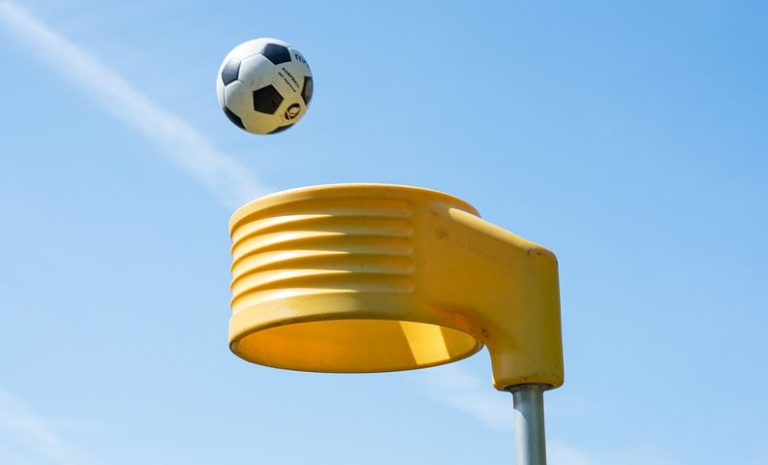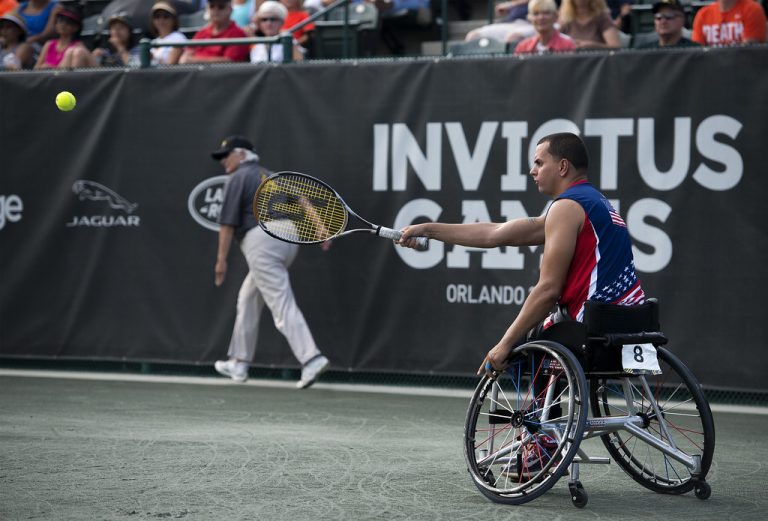General Rules of Weightlifting
Weightlifting deserves more mainstream recognition for its incredible displays of power, precision, and competitive drive. Athletes harness strength and flawless technique to raise massive weight overhead. The explosiveness, focus, and mastery of elite lifters captivates audiences. By understanding weight classes, rules, lifts, and skills, anyone can gain an appreciation for this exceptional strength sport.
This article covers the fundamentals of competitive weightlifting to showcase why it warrants more public enthusiasm. We’ll explain the recognized weight categories, equipment regulations, competitive lifts, and judging criteria. Insight into training, technique perfection, and maximizing ability provides new perspectives.

Once aware of regulations, technical skills, and competitive format, the sheer power, control, and commitment of these athletes shines through. Weightlifting has earned distinction as more than just gym training. Let’s begin by looking at the recognized weight classes in competition.
Knowing Your Limits
You need to know your limits when it comes to weightlifting. It’s important to listen to your body and not push yourself too hard. The key to weightlifting safely and effectively is to find the balance between challenging yourself and not pushing yourself too far.
The best way to do this is to track your progress. After each session, take note of the weights you used and how you felt afterwards. This will help you understand how your body is responding to the exercise and guide your future workouts. If you find yourself struggling to keep up with the same weights, it might be time to back off and adjust your goals.
When it comes to weightlifting, it’s also important to consider the type of exercises you’re doing. Not all exercises are suitable for everyone, so it’s essential to find the exercises that work for you. Research different exercises and find the ones that will best target your goals and which won’t put too much strain on your body.
Additionally, it’s important to give your body enough time to rest and recover. After each session, make sure to take a few days off to allow for muscle recovery. If you push yourself too hard, you may end up with an injury that could hamper your progress or, worse, keep you from exercising at all.
Finally, don’t forget to warm up and cool down. Before each session, make sure to do some light stretching and warm up exercises to prepare your body for the workout. After the session, do some more stretching to cool down your body and prevent injuries.
Proper Form and Technique
You must maintain proper form and technique when weightlifting, both for effective training and to reduce the risk of injury. Correct posture and movement will help to ensure that you’re targeting the intended muscles specifically, so that you can maximize muscle recruitment. To help you stay on track, here’s a handy table with the basics of proper form and technique:
| Exercise | Correct Posture | Muscle Recruitment |
|---|---|---|
| Squat | Knees over toes, chest up, back straight | Glutes, quads, hamstrings |
| Deadlift | Hips low, shoulders back, chest up | Back, hamstrings, glutes, trapezius |
| Shoulder Press | Standing or seated, arms bent at 90 degrees | Shoulders, triceps, traps |
| Bent-over Row | Bent at hips, chest up, back straight | Back, biceps, traps |
| Chest Press | Arms bent at 90 degrees, chest up, elbows out | Chest, triceps, shoulders |
It’s important to remember that proper form is key for effective weightlifting. To ensure that you’re in correct posture, practice in front of a mirror or have a spotter help check your form. Additionally, you should learn to recognize when you’re straining too much or if a position is uncomfortable. If you are in pain, stop immediately and adjust your form. With proper form and technique, you can have an effective and safe weightlifting routine.
The Benefits of Weightlifting
Gaining the benefits of weightlifting can help you to reach your fitness goals. Weightlifting is an effective way to build muscle, strength, and improve your overall fitness. It can also help you to stay healthy and fit as you age. The benefits of weightlifting are numerous, and include physical, mental, and emotional benefits.
Physically, weightlifting can help you to gain muscle, strength, and improve your posture. As you lift weights, your muscles will become stronger, more toned, and healthier overall. You’ll also be able to lift heavier weights, which will help you to develop even more muscle and strength. Weightlifting can also help to improve your posture, as it strengthens the muscles in your back and core.
Mentally, weightlifting can help to improve your focus and concentration. As you lift weights, your brain will become more alert and focused, as it requires you to concentrate on the task at hand. This focus can be beneficial in other areas of your life, as it helps to improve your mental clarity and focus.
Emotionally, weightlifting can help to reduce stress and anxiety. As you lift weights, you can clear your mind of negative thoughts, and focus on the task at hand. This can help to reduce stress and anxiety levels, as your body releases endorphins which have a calming effect.
Choosing the Right Equipment
When choosing the right equipment for weightlifting, it’s important to consider your goals and abilities. To help make sure you have the best possible experience, here are some tips to keep in mind:
- Research different types of weights. There are many different types of weights and equipment available, so it’s important to research your options and find the one that best suits your needs. If you’re a beginner, it’s better to start with lighter weights and work your way up as you grow stronger.
- Select the right size. When selecting weights, it’s important to make sure you choose the right size for your height and body type. If the weights are too heavy, you won’t be able to lift them properly and may end up injuring yourself.
- Get the right accessories. It’s also important to get the right accessories, such as gloves, straps, and belts, for your weightlifting. These will help you lift the weights safely and maximize your gains.
- Learn proper technique. Finally, make sure you learn proper technique when lifting weights. This will help you get the most out of your workout and reduce your risk of injury.
Warm-up and Cool-down Exercises
Before you start your weightlifting session, it’s important to include warm-up and cool-down exercises. Warm-up exercises are essential for improving joint mobility, body mechanics, and overall performance. They also help reduce the risk of injury. Cool-down exercises are important for gradually decreasing intensity and allowing your body to return to its natural resting state.
| Exercise | Warm-Up | Cool-Down |
|---|---|---|
| Jumping Jacks | ✅ | ❌ |
| Squats | ✅ | ✅ |
| Push-ups | ✅ | ❌ |
| Jogging | ✅ | ✅ |
To help you get started, here’s a quick guide to warm-up and cool-down exercises. Jumping jacks are a great warm-up exercise. They get your heart rate up and prepare your body for weightlifting. Squats are important for warming up the muscles in your lower body. Push-ups are a great warm-up exercise for your upper body muscles. Finally, jogging is a great warm-up exercise that helps improve joint mobility and body mechanics.
When it comes to cool-down exercises, squats and jogging are the perfect choice. Squats help your body gradually decrease intensity and return to its natural resting state. Jogging can also be used as a cool-down exercise because it helps bring your heart rate back to its normal resting state.
Safely Increasing Resistance
As you progress, you need to safely increase resistance in order to continue to see results. This could include:
- Increasing reps: When it comes to reps, start with a manageable number and gradually increase over time.
- Varying sets: To avoid plateaus, consider adding additional sets or supersets.
- Increasing weight: As you grow stronger, it’s important to challenge yourself with heavier weights.
- Rest time: Don’t forget to take rest days. This will help your muscles recover and avoid injury.
When increasing resistance, you want to do so gradually. This may mean adding more reps or sets, increasing weight, or taking more rest days. You should always listen to your body and adjust accordingly. If something doesn’t feel right, you should stop or reduce the resistance.
It’s important to know when to push yourself and when to take a step back. This can help you avoid injury and stay on track with your progress. You should also consult with a certified trainer or weightlifting coach to get personalized advice on safely increasing resistance. They can help you develop the right strategy for reaching your goals.
Rest and Recovery
How often should you rest and recover when weightlifting? The answer to this question depends on your own personal fitness goals, as well as your age and current level of fitness.
Generally speaking, it’s recommended that you take at least one day off per week to allow your body to rest and recover. During your rest days, it’s important to focus on activities that can help you to relax and reset, such as yoga, stretching, or meditation. Taking this time to pay attention to your physical and mental health can help to prevent injury and burnout.
Rest and recovery are essential for any weightlifter, as it helps to reduce muscle soreness, improve muscle gains, and promote better mental clarity. If you’re new to weightlifting, you may want to consider taking two rest days per week. This will help to adjust to the physical demands of the workout and reduce the risk of injury. As your fitness level increases, you may be able to reduce the number of rest days to one.
It is also important to pay attention to the amount of rest you get during the night. Aim for at least seven to eight hours of sleep per night, as this will help to reduce fatigue and improve performance. If you’re feeling particularly sore, you may want to add an extra rest day to your schedule. This will help to speed up the recovery process and allow your muscles to heal properly.
Nutrition for Weightlifters
You need to pay attention to your nutrition if you’re weightlifting, so that you can get the most out of your workouts. Proper eating habits can make a big difference when it comes to building muscle and seeing results. Here are some tips to help you make the most of your nutrition when weightlifting:
- Packing Snacks: You should always have healthy snacks on hand when you’re weightlifting. This will help you avoid going too long without eating and ensure that you’re fueled enough to get through your workout.
- Meal Planning: To get the most out of your nutrition for weightlifting, you should plan out your meals in advance. This will help you to make sure you’re getting all the nutrients you need and that you’re not overindulging.
- Hydration Habits: Staying properly hydrated is an important part of weightlifting. Make sure you’re drinking enough water throughout the day and after your workouts.
- Supplement Choices: If you’re looking to add extra nutrients to your diet, consider taking a supplement. This can help you to get the most out of your weightlifting routine.
Injury Prevention and Treatment
Take care of yourself while weightlifting, and make sure to treat any injuries quickly. Pre-workout stretching is an essential part of injury prevention, as it helps to warm up the muscles and increases flexibility. Stretching should be done prior to any weightlifting session and should focus on the areas that will be used during the session. Post-workout massage is also beneficial for injury prevention and treatment. A massage helps to reduce muscle tension, improve flexibility, and facilitate the removal of lactic acid buildup in the muscles.
For more serious injuries, it is important to seek medical attention. If an injury is severe, it is always best to consult with a medical professional. Additionally, following a weightlifting session, it is important to put ice on any areas that are sore or swollen. This can help to reduce inflammation and pain.
| Pre-Workout | Post-Workout |
|---|---|
| Stretching | Massage |
| Focus on areas used | Reduce muscle tension |
| Increase flexibility | Improve flexibility |
| Facilitate removal of lactic acid |
If an injury does occur, it is important to follow the RICE method. RICE stands for rest, ice, compression, and elevation. Resting the injured area is very important as it allows the body time to heal. Applying ice to the injury helps to reduce swelling and inflammation. Compression should be applied to the area to provide support and reduce swelling. Elevation of the injury site may also help to reduce swelling.
Frequently Asked Questions
What Are the Best Weightlifting Exercises for Beginners?
For beginners, the best weightlifting exercises are those that focus on both stretching techniques and strength training. Start with light weights and make sure to use proper form when lifting. Concentrate on compound exercises like squats, deadlifts, chest presses, and rows. These exercises will help strengthen multiple muscles at once and help build a solid foundation to build upon.
Additionally, stretching before and after each workout will help reduce the risk of injury and help with recovery. Stretching techniques such as yoga or dynamic stretching will help increase flexibility and improve range of motion.
How Often Should You Lift Weights for Optimal Results?
As a beginner, you should lift weights 2-3 times per week, allowing at least one day of rest in between. This will help ensure your muscles have adequate time to recover and build strength.
The amount of time you spend lifting each session should depend on your goals, with more time allocated to sets that focus on developing muscle endurance or strength.
It’s also important to keep an eye on muscle fatigue. If you feel tired during a workout, take a break and don’t push yourself too hard. This will help minimize the risk of injury and keep you motivated.
Is It Better to Lift Heavier Weights With Fewer Reps or Lighter Weights With More Reps?
Lifting weights is like a chess game – you must carefully consider your moves.
When it comes to the Current Question, it really depends on your goals. If you want to increase muscle size and strength, then you should focus on heavier weights with fewer reps. This helps to maximize muscle fatigue and form improvements.
On the other hand, if you’re looking to increase muscular endurance, lighter weights with more reps could be better.
Ultimately, it’s up to you to decide which approach is best for achieving your goals.
Is It Necessary to Have a Spotter When Weightlifting?
It isn’t always necessary to have a spotter when weightlifting, however it can be beneficial.
Having a spotter can provide extra danger awareness and help ensure form consistency.
Spotters can help you complete more reps and push yourself further.
They can also spot you if you get stuck and encourage you to complete the lift.
In addition, spotters can help you with safety, such as ensuring the weight isn’t too heavy and you’re using proper form.
Having a spotter can ultimately help you reach your fitness goals more effectively.
How Can I Improve My Weightlifting Technique?
Improving your weightlifting technique is a process of understanding and modifying your form and using progressive overload.
Start by breaking down the exercise into its main movements and focusing on perfecting each piece. Make sure you have the correct posture and body alignment, and use a mirror to check your form.
Start with lighter weights to practice the movements and master the form. Then, gradually add weight as you’re comfortable. As you increase the weight, you should make sure to keep the same form and breathing technique.
This is progressive overload and will help you keep seeing results in your weightlifting.
Weightlifting is a great way to improve your physical fitness, but it also carries risks. With proper technique, equipment, warm-up and cool-down exercises, rest, and nutrition, you can successfully lift weights and reap the benefits while avoiding injury.
So remember – when weightlifting, take it slow and steady, and you’ll be sure to reach your weightlifting goals.






